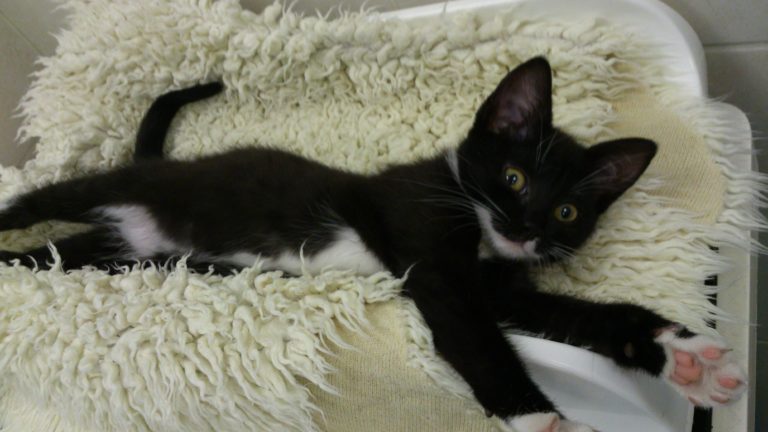
Mice can make very friendly pets, but do not attempt to keep wild mice! Domesticated mice come in a wide variety of colours. Males have a stronger smell and tend to be more aggressive towards each other, so for that reason females tend to make better pets.
They tend to live between 1 – 2½ years and a healthy adult should weigh between 20 – 60g depending on sex and age.
Mice love the company of other mice, so it’s best to keep them in same sex pairs or groups. A breeding pair of mice can produce a litter every 3 -4 weeks, with an average of eight to ten babies per litter, and can become pregnant within 24 hours of giving birth. Therefore, we strongly advise keeping males and females in separate cages!
A wire cage with a plastic tray floor are the best cages for mice. Two mice will need a cage that is at least 60cm x 50cm in floor space, by 30cm high. They can squeeze through tiny gaps, so ensure the gaps between the bars are no wider than your little finger.
Provide your mice with lots of wooden toys to gnaw on, and lots of other play things to bite, hide in, and generally run around with! Another fun game is to hide treats around the cage for them to forage and find. Mice love to climb, so provide branches to climb, or suspend rope from the roof of their cage for them to climb. They also love going through tunnels, so provide plastic or cardboard tubes for them to run through (and chew!).
You will need to have a deep layer of wood shavings for burrowing and use one area of the cage for a toilet. Have a nest box with nesting material inside. Mice tend to use one area of the cage for urinating, so this area will need to be cleaned frequently (perhaps daily) and the whole cage will need to be cleaned once a week. Keep the cage away from direct sunlight and draughts, and away from loud noises (e.g. TV, radio).
Although mice are friendly once tamed, they can be timid to start with, and will quite often bite when scared, so you will need to earn their trust before handling them. When you approach them, crouch down and speak very softly. Let them come to you – perhaps hold a treat in your hand for them to have, and be patient. They may not come to you the first time you try this. Once they are happy for you to have your hands near them, gently hold the mouse by the base (not the tip!) of the tail gently but firmly and slowly lift the back end and gently slide your hand under the mouse’s body.
NEVER wake your mouse up abruptly and pick it up as this could frighten them and they may react by biting you.
Mice are relatively clean animals so not need to be groomed regularly.
Neutering is not routinely performed in mice as any anaesthetic can prove risky for them. If you do not want your mice to have litters, then keep males and females in separate cages.
You should be feeding your mouse a good quality pelleted food. Ensure you choose a ‘nugget’ food, rather than muesli-style. With the muesli-style diets, they pick out the parts that they like and leave the parts that they don’t, which means that they may not get all of their required nutrients. Nugget-style pellets prevent this selective feeding, as each pellet has an equal amount of nutrients. Finally, you can also give your mouse some fresh greens, but not too many! Try to choose foods that are low in fat, such as carrot, apple and broccoli. They also love sunflower seeds, but these are quite high in fat so be careful not to give them too often. Take care if you are thinking of changing their diet, and always ensure you change foods over gradually, over a period of 10 days.
Tumours:
Mice are particularly susceptible to tumours, especially mammary tumours in females. 90% of mammary tumours in mice are malignant, and they can grow very quickly. Surgical removal can be performed when the mass is very small, but if left too long then surgery is no longer an option.
Respiratory Problems:
Breathing difficulties in mice are quite common and usually caused by poor living conditions. Always ensure you clean toilet areas every day or two, and the entire cage every week (at least).
If your pet is in any way unwell, contact your vet immediately to book an appointment.
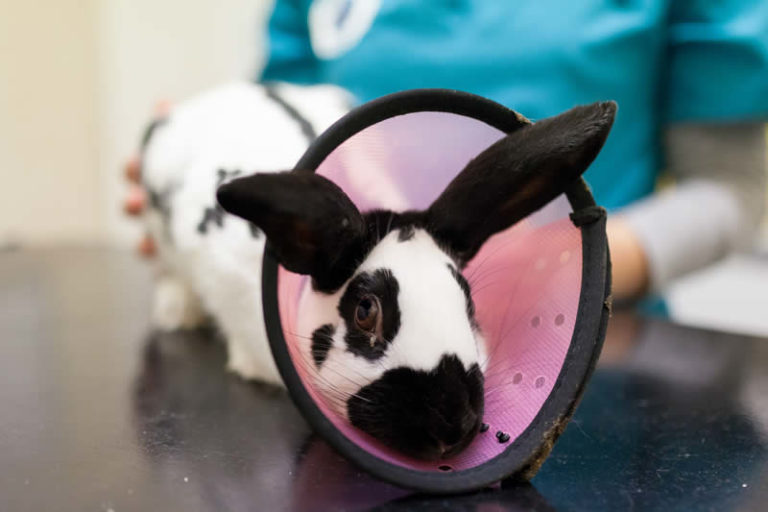
There are many health and social advantages in neutering your pet, and we are happy to discuss this routine procedure with you and answer any queries you may have.
Like cats and dogs, we recommend routine neutering of rabbits.
Castrating males can help to calm them down, will eliminate the risk of testicular cancer and can prevent the rabbit from spraying everything, including you, with urine! We can castrate male rabbits from about 4 months of age.
Spaying females can help to reduce any aggressive and territorial behaviour. It also eliminates the risk of Uterine Cancer, which is extremely common in un-neutered female rabbits. We can spay female rabbits from 4-6 months of age.
Neutering male and female rabbits also makes litter training a lot easier and allows you to keep more than one rabbit together happily.
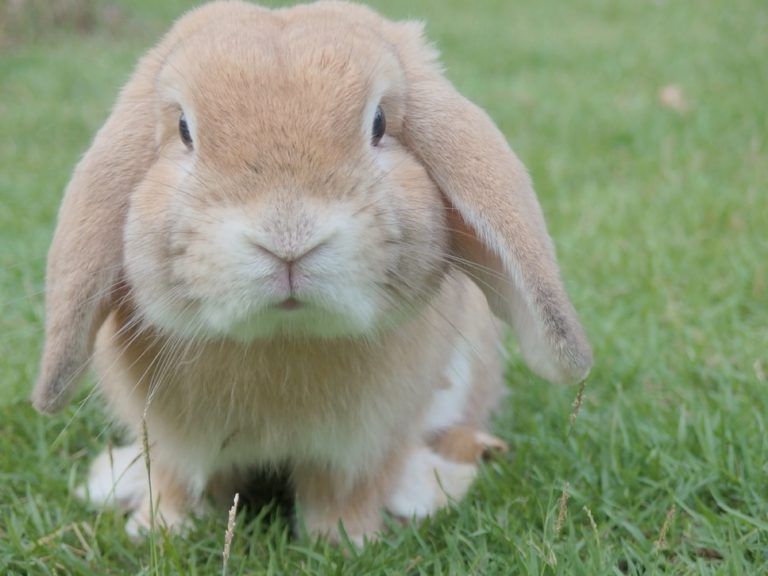
Rabbits are highly intelligent, social, sensitive and inquisitive animals. They are the third most popular pet after cats and dogs but are the most neglected with latest figures showing that 80% do not receive the correct care.
Although they are extremely cute and appealing to children, rabbits are not easy pets to look after. Contrary to popular belief they do not enjoy being handled and, having such delicate skeletons, can break bones easily. They require lots of care and time for the entirety of their lives, which could be up to 8-15 years!
There are over 35,000 rabbits is rescue centres around this country looking for a new home. Most centres will neuter and vaccinate their rabbits before finding them a new home and often rely solely on donations and people’s generosity to fund this. Many rabbits are given up when the novelty wears off and the reality of their care sets in. These rabbits find themselves in rescue centres through no fault of their own.
If you are thinking of getting rabbits, why not visit your local re-homing centre and offer a needy rabbit a second chance in life?
The RSPCA and RWA (Rabbit Welfare Association) state that a pair of small to medium rabbits should have a minimum of 6ft long x 2ft deep x 2ft high hutch with an attached 6ft long by 4ft wide x 2ft high run. Of course bigger is better!
Rabbits are highly sociable creatures and, in the wild, live in groups. A rabbit that is forced to live alone will become extremely depressed and will not be able to display its natural behaviour.
The most successful combination is a neutered male and a neutered female. New rabbits should always be introduced to each other on neutral territory (i.e. a place where neither of them has been before). Please speak to our nurses if you require more information.
Although it was common practice years ago, rabbits and guinea pigs must not be housed together. They have completely different dietary needs, and rabbits have also been known to seriously injure and even kill guinea pigs on several occasions due to their size and the strength of their back legs. Most importantly, rabbits and guinea pigs that are not given the opportunity to live with another of their own kind will never be truly happy as rabbits and guinea pigs cannot communicate with each other.
Rabbits are prey animals and, therefore, hide the fact that they are in pain very well. If you notice that your rabbit is acting differently or does not seem its normal self, it is better to get them checked by a vet. Rabbits teeth grow continuously and, if not worn down correctly, can form sharp spurs that dig into the rabbit’s cheek and tongue and cause immense pain. The grinding motion of the teeth when a rabbit eats hay is the best way to ensure their teeth wear down – another reason why hay is such an important part of their diet.
Rabbits have a very complex and delicate digestive system. They need to be able to graze all day in order to keep their guts mobile. If a rabbit stops eating for any reason, it must be seen by a vet straight away. If left untreated, the rabbit can go into stasis, where their digestive tract slows right down. This is very painful and can easily be fatal.
Unlike cats and dogs (and humans!), rabbits should not be starved before an operation. Therefore, if you bring your rabbit in for a surgical procedure, please feed them as normal and bring some of their food with them as we like to try and get them eating as soon as possible once they have woken up.
Encephalitozoon Cuniculi (EC) is a single-celled parasite that can cause complete paralysis, kidney and eye infection and death. Many rabbits have already been exposed to the parasite but may not show symptoms until later in life or when another illness or stress triggers the disease. It can remain hidden for years and can affect other animals and even humans. It is transmitted by spores in the urine and can be caught from dirty food and water bowls and unsanitary living conditions. It can also be passed from mother to babies when they are in to womb. Common symptoms of EC include excessive drinking and urination, weight loss, cataracts, head tilt, hind leg paralysis, tremors, kidney failure and, at worst, death.
The best way to treat EC is with a course of Panacur or Lapizole, administered orally once a day for 28 days. Your rabbit should be treated with one of these products if they are displaying any symptoms or at times of stress (i.e. after another illness, introducing rabbits to each other and after acquiring a new rabbit). It is also important to disinfect the rabbit’s environment and food bowls regularly.
Flystrike is a common condition in rabbits, especially in the warmer weather. Rabbits that are more at risk include those who are overweight (as they are not able to clean themselves properly), those who live in dirty conditions and those who are confined to small spaces with little room to move around. Flies will lay their eggs in warm moist areas (such as a rabbit’s dirty bottom). The eggs will then hatch and the maggots will eat their way into the rabbit’s body. If not treated early, Flystrike is fatal.
Please contact us straight away if you notice any of the following:
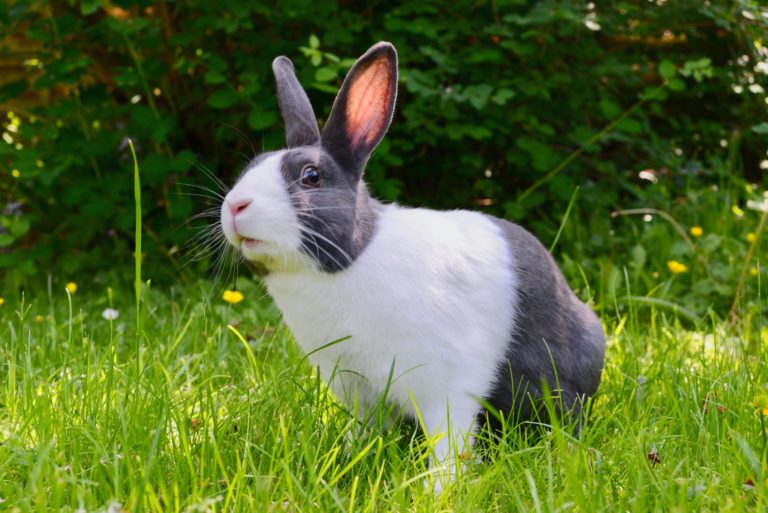

Rabbits require a diet that is extremely high in fibre and should be at least 85-90% good quality hay and/or grass. They should have constant access to fresh water.
Traditional muesli mixes are very high in sugar, low in fibre and encourage selective feeding (the rabbit will pick out their favourite bits and leave the rest). This means that your rabbit will miss out on some essential nutrients.
The best dried food for rabbits comes in pellet form, such as Burgess Excel. Each pellet is nutritionally balanced to ensure your rabbit gets all the nutrients it needs in each bite. It is important not to feed too many pellets or your rabbits will not eat their hay. As a guide, a small to medium rabbit only needs an egg-cup full of dried food per day. Always check the packaging to ensure you are feeding the correct amount.
A small amount of fresh vegetables, such as spring greens, broccoli, basil, parsley, mint, cabbage and cauliflower leaves can be fed daily. Fruit and sweet vegetables, such as carrots, parsnips and apples should be fed in moderation (no more than once a week) as they are very high in sugar.
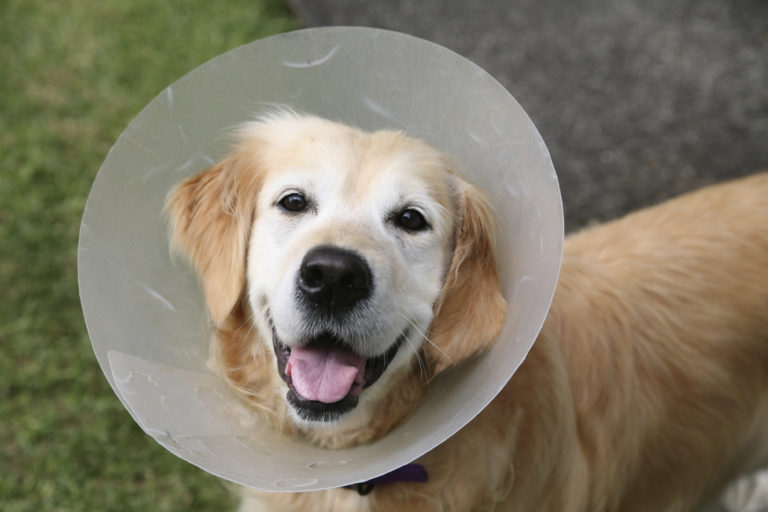
There are many health and social advantages in neutering your pet, and we are happy to discuss this routine procedure with you and answer any queries you may have.
Males can be neutered, also known as ‘castrated’, from 6 months of age. This is equally as important as spaying females, as it prevents testicular cancer. Neutering will also lower the levels of testosterone and help to prevent undesirable sexual behaviours. It will stop him from pestering females and possibly causing more unwanted litters! Neutering can also help to reduce urine marking and some forms of aggression which are influenced by the male hormones.
Females can be spayed from 6 months of age. Neutering is important as it prevents uterine disease, reduces the risk of mammary cancer and prevents unwanted litters. It is a common concern that bitches need to have a litter of puppies or a season before they are spayed. However, neither of these provide any health benefits at all and will only add to the problem of rescue centres being overrun with unwanted puppies.
Please see our pre-operative and post-operative instructions for more information on what to expect when your pet comes in for neutering.
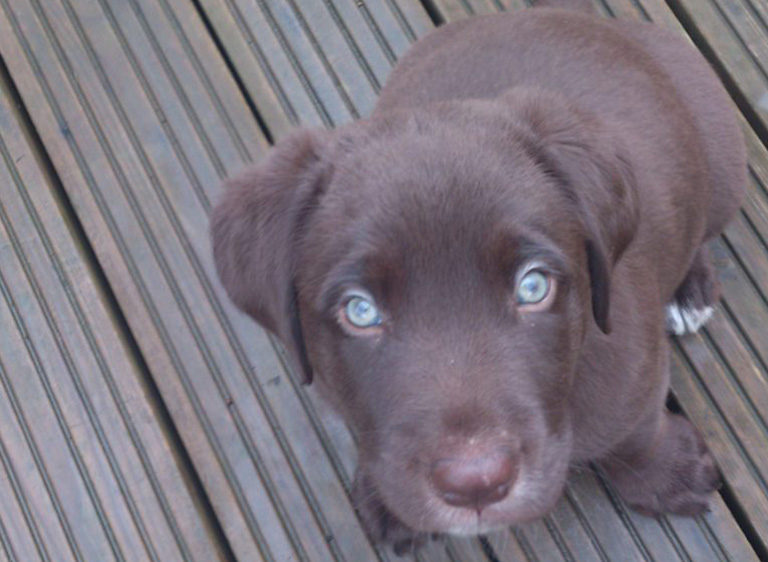

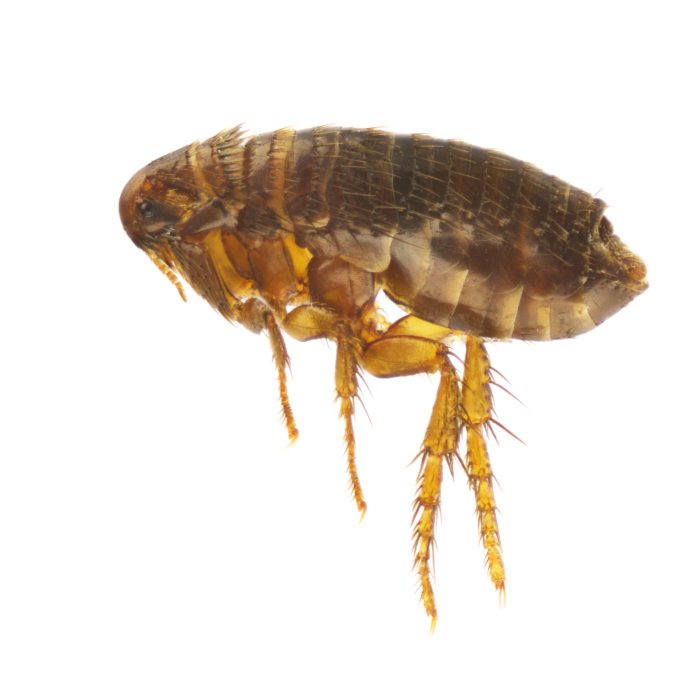
Fleas can cause skin disease, bite humans and also carry tapeworms. Look out for black specks along your pet’s spine, or when you comb her or him, wipe the comb on a damp tissue – if the dirt on the tissue starts to bleed out, this means that this is flea dirt (as opposed to mud), and she/he has fleas.
As with majority of health care, prevention is better than cure, so it is important to regularly use flea treatments. There are a variety of methods used to prevent fleas, we use prescription only products, as these products are newer and there is much less resistance to them that the older drugs that are available in the shops. A check up for flea treatment is FREE and this means you can buy flea (and worm) treatment from us for a full year after the consultation.
Please contact the staff at the surgery for further information on flea control.
Cats can suffer infestations of roundworms and tapeworms which can cause digestive upsets as well as posing a risk to human health. 
There are a number of products which can be used to prevent and treat worms, and many of these will also treat fleas (see above). Please contact us in practice for more information about the right treatment choice for your cat.
In the summer months ticks can become a problem for our four legged friends. Not only are they unpleasant and capable of causing your pet irritation, they can also transmit Lyme Disease to humans. We have products in-practice which treat ticks. Please contact us for more information
